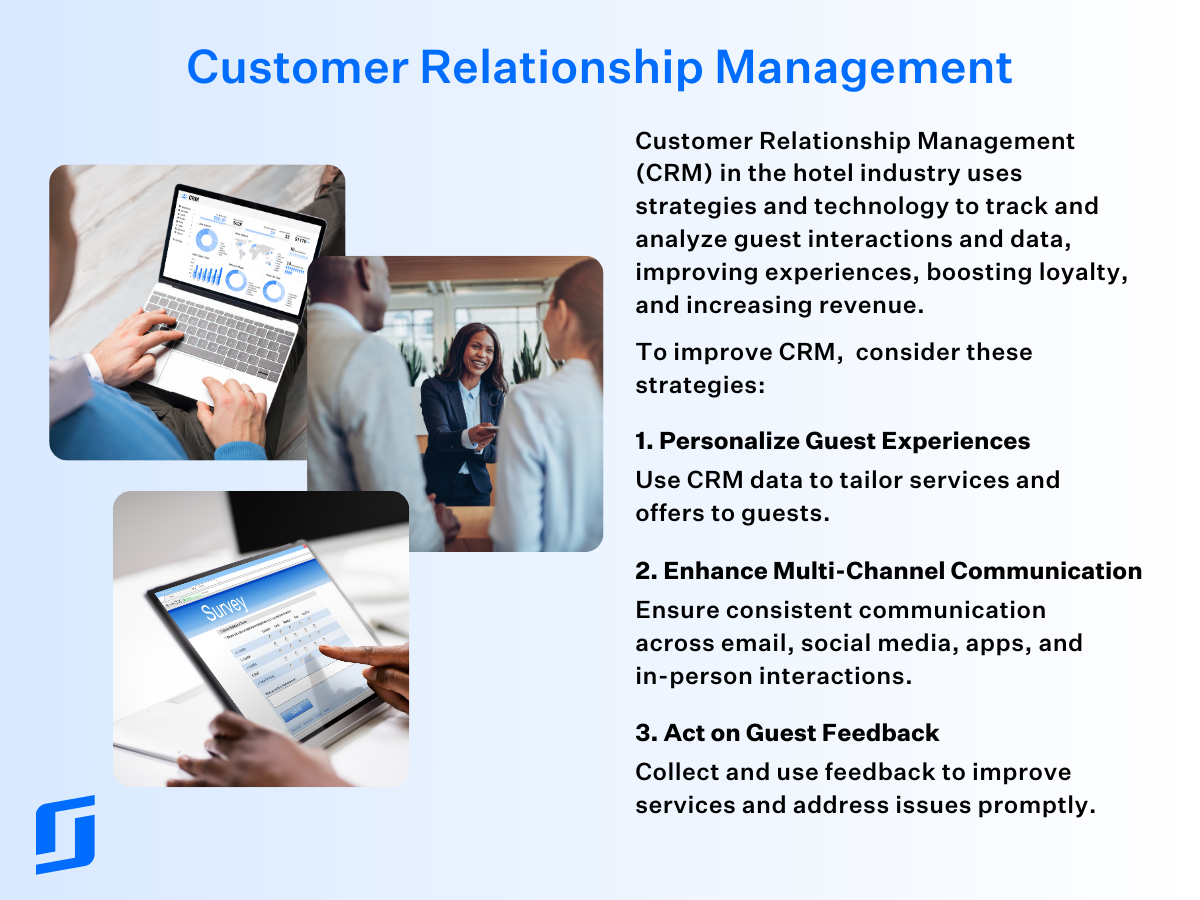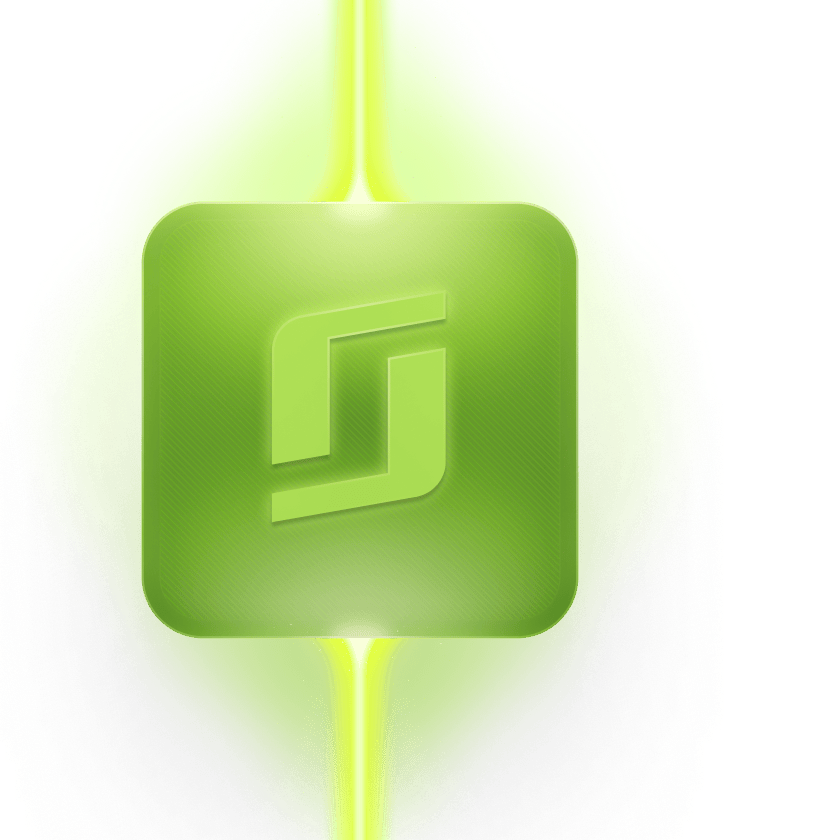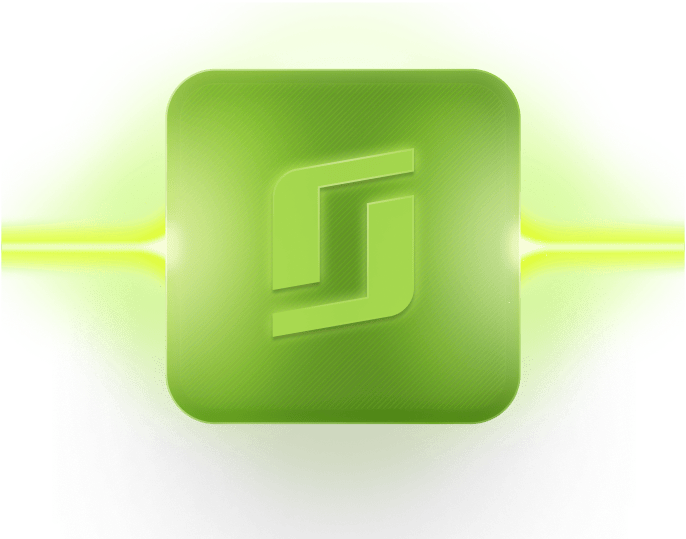What is customer relationship management?
Customer relationship management (CRM) is both a strategy and a set of tools that helps you manage and improve guest relationships.
Some hoteliers think of a CRM as a marketing add-on. In reality, it’s a core part of running a modern operation. A CRM helps bring together all guest interactions, no matter where they happen. Whether someone books through an OTA, contacts you directly, or shows up unannounced, a CRM gives your team the context they need to deliver a smooth experience.
A CRM works by collecting the data your guests leave behind and helping your team use it in smarter ways. Booking history, pre-arrival requests, in-stay preferences, and post-stay feedback can all feed into a single profile. This allows you to tailor communications, surprise guests with personalised touches, and stay connected long after check-out.
In the hotel world, CRMs are less about sales pipelines and more about creating memorable stays, improving efficiency, and building loyalty over time.
In this blog, we’ll show you why a CRM matters, how you can effectively implement one in your hotel business, and a few great options that have helped hotel managers and owners like you succeed in an increasingly competitive landscape.
Table of contents
Why customer relationship management in a hotel is important
Guest expectations are higher than ever, but the tools many hotels rely on haven’t kept up. When booking information lives in one system, guest preferences in another, and follow-up notes in someone’s inbox, the result is a disjointed experience – for both your guests and your team.
Your team misses an upsell. A returning guest gets the wrong room. Another request falls through the cracks. These are signs of a system that isn’t working hard enough for your business.
A CRM helps connect the dots. By centralising guest information and automating key touchpoints, it gives your team the confidence to personalise each stay, follow up consistently, and make smarter use of the data you’re already collecting.
And it delivers real results. Hotels using targeted CRM strategies have seen an average 23% increase in repeat bookings. That kind of loyalty means long-term revenue growth. Yet CRM adoption across the industry is still low. Only 21% of hotels, covering about a third of all rooms globally, currently use a CRM.
That gap creates a clear opportunity for forward-thinking hotels to stand out.
Bring your guest data together with SiteMinder
Stop switching between systems. SiteMinder helps you connect your CRM and PMS, so every guest interaction feels personal.
Watch demo
Benefits of having a customer relationship management system
Each interaction gives you a choice: make it meaningful or let it pass unnoticed. From the moment they book to the day they check out, guests are sharing valuable information about their preferences, habits, and expectations. Without a system to capture and act on that data, opportunities slip away.
A good CRM gives your team the clarity and time to focus on the experience. Instead of bouncing between inboxes and spreadsheets, staff can access up-to-date guest profiles, automate repetitive tasks, and deliver more consistent service. Research shows that increasing customer retention by just 5% can boost profits by as much as 95%.
For hotels competing on loyalty and repeat bookings, that shift has real impact.
Enhanced communications
Instead of writing the same emails over and over, your team can use templates and triggers to automate confirmations, reminders, and follow-ups. Messages go out on time and in the right tone, without the need to chase every booking manually.
Personalised experience
With each guest profile automatically storing past stays, preferences, and notes, it becomes easier to tailor the experience. That could mean offering their favourite room, remembering dietary needs, or simply greeting them by name when they walk through the door.
Streamlining operations
Routine tasks like sending feedback requests or pre-arrival information can be automated through your CRM. That cuts down on admin time and keeps your staff focused on delivering service, not processing paperwork.
Data-driven decisions
Your CRM stores information, but it also turns it into actionable insights. See which campaigns are driving return bookings, identify your most profitable guest segments, and adjust your strategy based on real patterns rather than guesswork.

Essential features of a customer relationship management solution
Not every CRM suits the way hotels work. Some are built for managing sales pipelines, others for handling support tickets. You need a system that helps your team respond quickly, personalise the guest journey, and reduce manual work without creating more complexity.
Here are the features that matter most in a hotel setting:
Guest management features
It starts with a single, detailed guest profile. Booking history, preferences, contact details, and feedback are all stored together, giving your team a full picture of every guest, even across multiple stays or properties.
Operational efficiency
Hotel-focused CRMs do more than store information. They take repetitive tasks off your team’s plate by automating confirmation emails, pre-arrival messages, and post-stay feedback requests. That means more time for in-person service and fewer details slipping through the cracks.
Marketing automation
Running targeted campaigns shouldn’t require a full marketing team. A strong CRM lets you group guests by past behaviour or stay history and schedule relevant offers—like a birthday discount, a seasonal package, or a follow-up for lapsed guests.
Analytics and intelligence
Instead of guessing what’s working, your CRM should show you. Reporting tools help you see which campaigns are performing, which guests are booking again, and where your highest-value guests are coming from.
Upsell opportunities
It’s easier to offer a well-timed upgrade when you know who’s most likely to take it. A CRM can help flag loyal or high-spending guests, so your team can offer extras like room upgrades or late check-out at the right moment.
Top 5 examples of customer relationship management software
There’s no shortage of CRM tools out there. Below are five popular platforms, each offering a different approach depending on the size, style, and needs of your property. Smaller hotels may benefit more from a dedicated, tailored tool, such as Little Hotelier.
Salesforce
Salesforce is a powerhouse when it comes to customisation and scalability. It’s typically used by large hotel groups that need to manage complex operations across multiple departments, including sales, loyalty, and marketing.
HubSpot
HubSpot is known for being user-friendly and easy to set up. Smaller hotels and independent properties often use it to manage guest contacts and run basic email campaigns without needing dedicated marketing staff.
Userpilot
Userpilot focuses on user engagement and onboarding. It’s more common in hybrid hospitality setups, such as serviced apartments or tech-enabled short-stay brands, where app-based check-ins and guest journeys are part of the experience.
Zendesk
Zendesk began as a support tool, and that’s still where it shines. Hotels with high guest messaging volumes often use it to keep track of service requests, ensuring nothing gets missed across email, chat, and other channels.
ActiveCampaign
ActiveCampaign blends CRM functionality with sophisticated marketing automation. It’s often used by hotel groups that want to nurture guest relationships with targeted offers, especially when running loyalty or re-engagement campaigns.
Customer relationship management: Best CRM in the hotel industry
You don’t need another system that adds more work. What you need is something that brings everything together (bookings, guest notes, preferences) so your team can do their job without constantly swapping across five different tabs.
The best CRM for hotels works quietly in the background. It picks up booking details from your Property Management System (PMS), logs guest interactions automatically, and helps you follow up with the right message at the right time. It’s not about having more data. It’s about having the right data, in the right place, when you need it.


